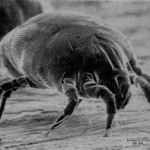Garburators are under appreciated and generally unnoticed appliances that is until they stop working, start to smell funny or sound like a blender filled with marbles and nails.
Garburators are essentially a hefty motor attached to an impeller that pulverizes food until it is small enough to pass into the drain pipe as you run water into the unit.
These units are very reliable, but many older units tend to have problems, especially when they are not used for extended periods. Garburators mix water and electricity which is typically not an ideal combination.
The most common problem is that the unit just stops working when you press the switch, and this is often realized after you have dumped the most disgusting mix of old food scraps into the unit, and they start to smell because the pieces are too large to wash into the waste drain pipe.
First things first press the wall or sink top button and listen carefully. If it is working you will definitely hear it turn on, or you may hear a very soft humming or buzzing noise from beneath the sink, or you will hear absolute silence.
If you hear nothing at all, grab a flashlight and look at the bottom or side of the giant motor hanging beneath your sink. There will be a small (usually red) button, which is an internal safety reset. Press this button in (you may need the end of a pencil or your pinky if it is inset into a small indent). If this button has popped out, there is a problem with your garborator, but if the button is depressed already, try to identify the breaker on the main electrical panel, and see if it is switched on. If the breaker is tripped, reset it by turning it off, then turning it back on. Test the garborator again. If it works, fantastic, otherwise you may hear the humming noise, (perhaps just briefly) before the breaker or safety reset trips off again.
If you hear the humming, even if just briefly before the breaker shuts off, likely the unit is seized. This sounds like bad news, but frequently it is simply because the unit hasn’t been used for months, or years.
Turn off the breaker, ensure that the switch is in the off position, and proceed to remove the rubber gasket in the mouth of the unit. With a flashlight, you should be able to see clearly into the unit (after you have scooped out all the disgusting food scraps mentioned at the beginning). With most the food removed, you can usually wash away the small scraps, unless the drain is plugged, in which case you need to remove the waste water in the unit as well. There are special suction tools for this, but in a pinch a turkey baster, or a car wash sponge will allow you to soak up enough water to see the impeller.
The impeller should turn freely. If it doesn’t turn (try the end of a wooden spoon) easily, this is what is causing the reset switch or breaker to trip. Food, dishwashing goo, rust and other assorted stuff can seize up the impeller, which causes the reset switch or breaker to trip, resulting in the clogged and/or smelly garborator.
Sometimes a wooden spoon with a long handle is enough to spin the impeller loose but often a small crowbar or large screwdriver is required. Be certain the unit is turned off at the breaker when trying to free the impeller! If you aren’t comfortable or absolutely certain you have disabled power to the unit, call a plumber!
Once the impeller spins freely, replace the rubber gasket or garborator sink stopper, turn on the breaker, double check the safety reset switch and turn the unit on. If you had the impeller spinning before, the unit should roar to life.
If it is smelling sour, cut up a lemon and dump it into the unit to help clean off whatever it is that is causing the odor. In fact, once a month or so, it doesn’t hurt to cycle the unit, to be sure it doesn’t seize up again.
If this does work, you have just spent 20 minutes saving several hundred dollars, if this doesn’t correct the problems you are experiencing, likely you require a new unit. Good luck!




